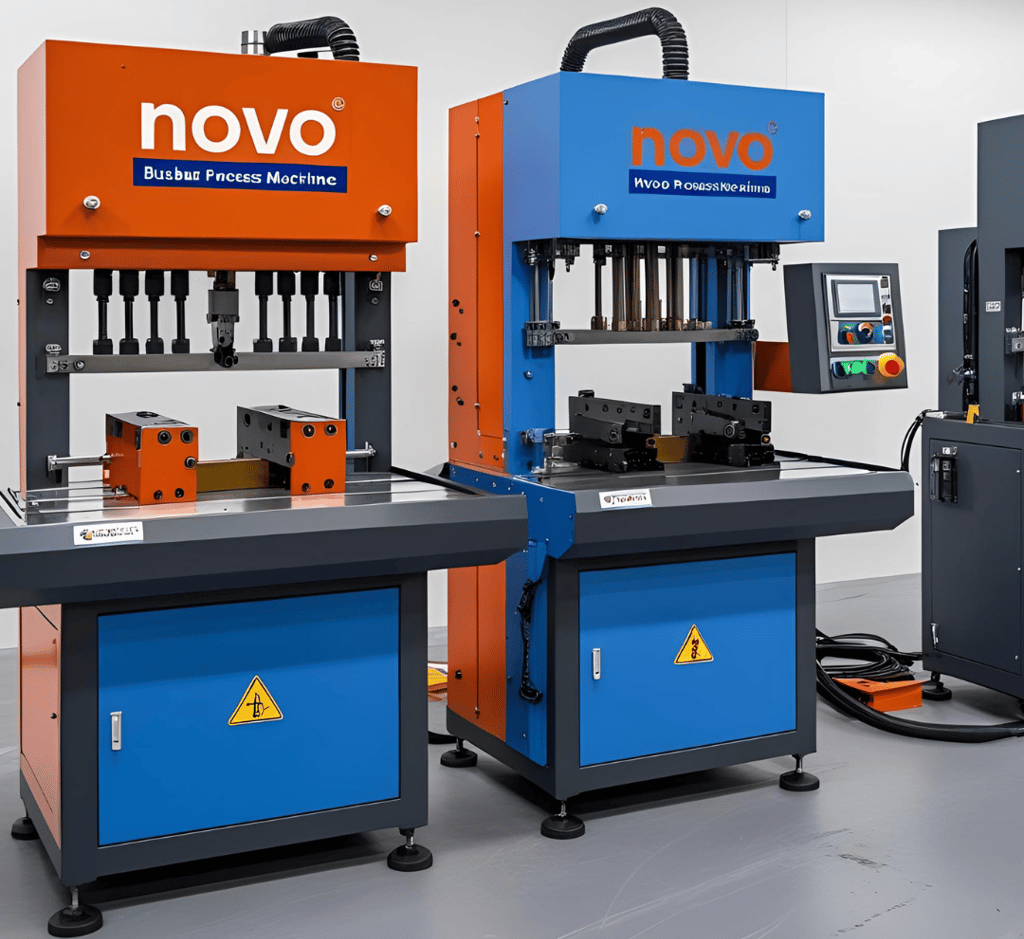Busbar Processing Machines: 5 Key Advantages for power distribution cabinet manufacturing
Discover how busbar processing machines revolutionize power distribution cabinet manufacturing. Explore 5 key advantages over traditional methods to enhance efficiency, accuracy, and productivity in your operations.
8/1/20254 min read


Introduction to Busbar Processing Machines
Busbar processing machines play a pivotal role in the manufacturing of power distribution cabinets, an essential component in modern electrical systems. These machines are specifically designed to handle the fabrication of busbars, which are conductive materials utilized to distribute electrical power efficiently within a power distribution system. Unlike traditional fabrication methods, which often involve multiple steps and manual labor, busbar processing machines integrate advanced technology to streamline the production process.
The fundamental operation of these machines typically includes tasks such as cutting, bending, and drilling busbars, which are essential for creating a robust connection in electrical panels and switchgear. By mechanizing these processes, manufacturers can achieve a higher level of precision and consistency while significantly reducing production time. Furthermore, the automation of these tasks minimizes human error, which is a common challenge in traditional methods.
Technological advancements have led to the development of busbar processing machines that incorporate features such as programmable logic controllers (PLCs), touchscreen interfaces, and real-time monitoring systems. These features not only enhance operational efficiency but also allow for greater flexibility in design and customization. Furthermore, the machines can handle a variety of materials, including copper and aluminum, which are widely used in electrical engineering for their excellent conductivity.
Busbars are integral to various applications, ranging from commercial to industrial settings, as they facilitate the reliable distribution of power. With the ongoing demand for energy-efficient and reliable electrical systems, the significance of busbar processing machines in manufacturing power distribution cabinets cannot be overstated. As technology continues to evolve, these machines are set to become more efficient, ensuring that power distribution remains a seamless and reliable process.
Advantage 1: Enhanced Precision and Accuracy
The manufacturing of power distribution cabinets has significantly evolved with the advent of busbar processing machines, which provide enhanced precision and accuracy compared to traditional methods. These sophisticated machines employ advanced technologies such as computer numerical control (CNC) systems that allow for meticulous cutting, drilling, and shaping of busbars. Through automation, these machines are capable of executing precise specifications, leading to consistently high-quality components that align with design requirements.
One notable feature of modern busbar processing machines is their ability to integrate real-time measurements and feedback into the manufacturing process. This means that as the machine executes its tasks, it continuously adjusts based on the incoming data, ensuring that every cut and drill is executed flawlessly. By eliminating human error, manufacturers can achieve a higher level of consistency across production runs, which is a common challenge in traditional manual methods.
Moreover, enhanced precision directly correlates with reduced material waste. In traditional methods, inaccuracies in cutting and drilling can result in significant scrap metal, leading to increased costs and resource consumption. In contrast, busbar processing machines aim to minimize waste by maximizing the utility of the raw materials. This not only contributes to lower manufacturing costs but also supports sustainable practices within the industry.
Real-world applications of these machines have demonstrated remarkable improvements in quality control. For instance, a manufacturer in the electrical distribution sector reported a 30% reduction in production errors after implementing a state-of-the-art busbar processing machine. These advancements underscore the critical role that enhanced precision and accuracy play in transforming power distribution cabinet manufacturing. By prioritizing technological advancement, manufacturers are not only meeting but often exceeding industry standards, leading to superior products and enhanced reliability in electrical distribution systems.
Increased Production Speed
One of the prominent advantages of employing busbar processing machines in the manufacturing of power distribution cabinets lies in the significant increase in production speed. Traditional methods of busbar fabrication often involve labor-intensive manual processes that can lead to delays and potential inaccuracies. In contrast, the integration of automation and advanced machining techniques heralds a new era in manufacturing efficiency, allowing businesses to enhance their output remarkably.
Automation plays a pivotal role in streamlining production, significantly reducing the time required for various operations such as cutting, bending, and drilling busbars. With the capability to execute these tasks in rapid succession, busbar processing machines optimize workflow and minimize downtime. This not only accelerates the manufacturing process but also ensures consistent quality across production runs, which is often challenging to achieve in manual operations.
Several case studies illustrate the transformative impact of these machines. For instance, a leading manufacturer of power distribution equipment reported a 50% reduction in production time following the adoption of busbar processing technologies. By automating key processes, the company not only met increased demand but also gained a competitive advantage through faster turnaround times. This enabled them to fulfill orders more efficiently, enhancing customer satisfaction and establishing stronger market positioning.
The speed at which manufacturers can now operate with busbar processing machines allows for greater flexibility in responding to changing market needs and customer specifications. Companies can produce customized solutions rapidly, adapting their output without the constraints often associated with traditional fabrication methods. Consequently, the increased production speed provided by busbar processing machinery is not just an operational enhancement; it fundamentally redefines competitiveness in the power distribution sector.
Advantage 3: Cost-Effectiveness and Sustainability
The adoption of busbar processing machines has shown significant advantages regarding cost-effectiveness and sustainability in the manufacturing of power distribution cabinets. A critical factor contributing to their economical nature is the reduction of material waste. Traditional methods often yield considerable scrap material due to imprecise cuts and manual handling. In contrast, busbar processing machines utilize advanced technology to produce highly accurate cuts, thereby minimizing unnecessary waste and optimizing the use of raw materials.
Moreover, labor costs can be markedly lower with the implementation of busbar processing machines. Automation in manufacturing processes reduces the need for extensive manual labor, allowing manufacturers to allocate their workforce more efficiently. This shift not only streamlines production but also enhances overall productivity, as fewer workers can manage advanced machinery effectively, leading to reduced overhead costs.
In addition to labor savings, busbar processing machines contribute to improved energy efficiency, further enhancing their cost-effectiveness. These machines are designed to operate with lower energy consumption compared to traditional production methods. As a result, manufacturers benefit from reduced utility bills and can reallocate the savings to invest in other areas of their operations.
From a sustainability perspective, employing busbar processing machines offers substantial environmental benefits. With lower material waste and energy consumption, manufacturers play an essential role in promoting sustainable practices within the industry. By incorporating these machines into their operations, companies demonstrate a commitment to environmental responsibility, which is increasingly important in today's market where consumers and businesses prioritize eco-friendly practices.
In conclusion, the cost-effectiveness and sustainability of busbar processing machines present compelling reasons for manufacturers to consider this innovative technology as a strategic advantage over traditional methods.
Innovate
Leading manufacturer of busbar processing equipment solutions.
Contact
Support
+131 2713 4627
© 2025. All rights reserved.
